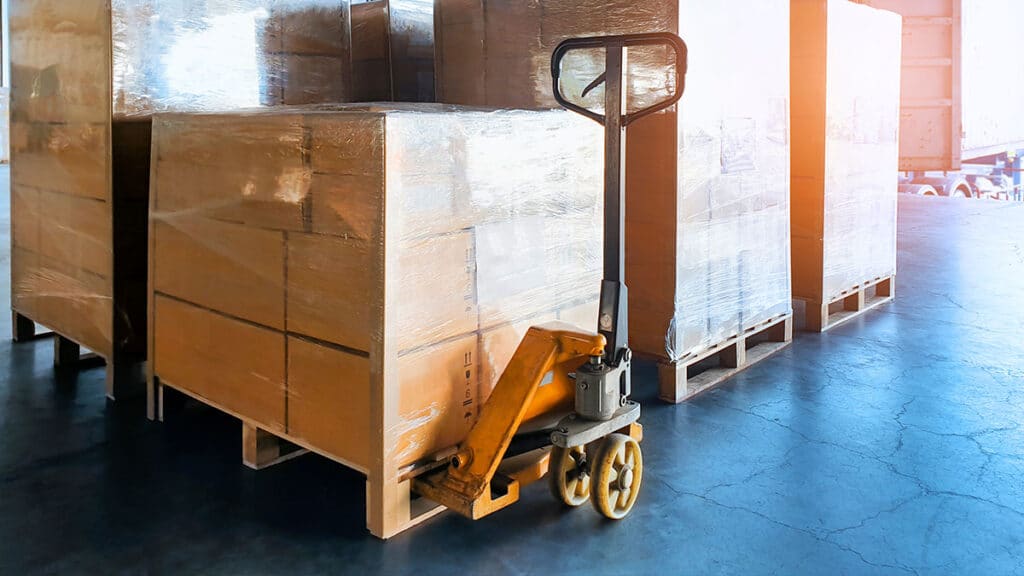
Overall, the trucking industry is thriving in current market conditions. High demand and low capacity have made it a veritable “carrier’s market” allowing carriers to pick and choose the loads they wish to take. However, both the truckload and the less-than-truckload (LTL) markets are starting to get more requests than they can actually handle.
The LTL market, in particular, is becoming overwhelmed.
Historically speaking, the LTL market was seen as a way to mitigate the potential fallout from tight capacity in the truckload market. However, as LTL services are being more heavily utilized, especially for “middle mile” transportation, many LTL carriers are actually turning away business.
Current market conditions have been brought about by a multitude of reasons (any one of which on its own wouldn’t be as big of a problem) that have culminated into the perfect recipe for a capacity crunch. Current factors affecting the freight industry are:
- Inventory shortages caused by COVID-19, which is creating increased demand as companies attempt to restock shelves.
- COVID-19 vaccine distribution consuming already limited availability of specialized equipment.
- Global shipping container shortage creating a backlog on U.S. ports.
- Pervasive driver shortage in the United States.
- Delays caused by severe winter storms.
- Growing demand for e-commerce.
While the LTL market is showing positive signs of growth and has been over the past several years, the capacity crunch is creating increased pressure on the industry, creating other issues aside from shipment delays.
The Rising Cost Of Freight
Of course, one of the most problematic results of tight capacity for shippers is the rise in shipping costs. The law of supply and demand dictates that as demand increases, the price goes up as well. While this is common sense, there are other factors to consider as well. Import prices for ocean freight have spiked tremendously, a problem in its own right, as some shippers are having to delay bringing in new goods because the rates are simply ruinous.
Simply put, the rates are rising.
Even if not moving freight overseas, shippers will likely struggle with rising rates imposed by LTL carriers. This is made even more complicated as previous forecasting statistics from years prior to the pandemic have been more-or-less rendered obsolete, given how unpredictable 2020 was. Simply put, the rates are rising. Shippers can expect to see rate increases in the 5-8 percent for the more desirable, high-density freight. Low-density freight, such as large and bulky items, are less desirable for LTL carriers, could see rate increases of 5-10 percent.
Why You Might Want to Consider Working with a 3PL for LTL
Partnering with a third-party logistics provider (3PL) is a viable solution for shippers looking to mitigate the rising costs of freight, especially given that the volatility of the freight market doesn’t show signs of calming down anytime in the foreseeable future.
3PLs can provide several different services for a shipper, depending on their needs. In addition to providing a better and more affordable experience for your customers, outsourcing your supply chain to a third-party also offers some other benefits that are crucial in the current market.
3PLs excel in the services they provide, increasing both visibility and efficiency within your operations
In particular, a 3PL often has strong working relationships with carriers that can help you not only secure freight, but at a competitive rate that is more forgiving on the budget. In addition to better rates, 3PLs excel in the services they provide, increasing both visibility and efficiency within your operations, an essential feature if your organization is looking to do more than simply survive the current market conditions.
When Choosing A Partner, You Want A 3PL With Best In Class LTL Blanket Rates
As small and mid-sized shipping companies often lack the purchasing power of larger organizations, a 3PL can help lower shipping rates through a blanket rate. Here, the 3PL can leverage the full weight of their spend, which tends to be considerably more than the shipper alone working with a limited shipping budget. Not only are these rates more stable than the open market rates (often held via a contract), but it also provides the shipper with more options for their freight. Ideally, when choosing a partner, you want a 3PL with best in class blanket rates. These rates are more competitive than what you’ll find on the market and may be more forgiving when shipping less than ideal freight.
3PLs also have an insight into the inner workings of a supply chain that you might be too close to see.
3PLs also have an insight into the inner workings of a supply chain that you might be too close to see. Working with a 3PL partner can help you to identify any weaknesses with your operations and provide solutions to fix them so that your supply chain can run leaner and smoother than before.




